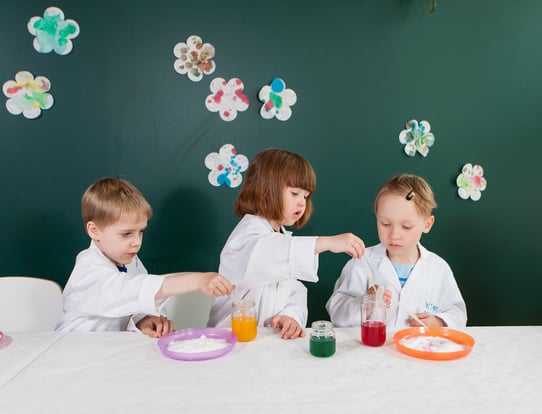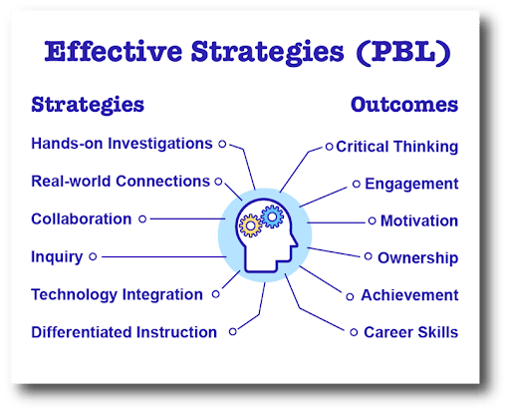
How You Should Be Teaching Multiliteracy
In today’s classrooms, students aren’t just reading textbooks. They’re decoding digital information, scrolling through...
ALI Staff | Published June 10, 2025
In today’s classrooms, students aren’t just reading textbooks. They’re decoding digital information, scrolling through newsfeeds, and encountering AI-generated content. But while technology evolves, literacy instruction in many classrooms still centers on traditional skills. This mismatch can leave students unprepared to navigate the complexities of a multimodal world.
That’s why teaching multiliteracy is essential. Students need more than just comprehension. They need critical thinking skills that help them evaluate sources, recognize bias, and communicate effectively across platforms. With information coming at them from every direction, the ability to distinguish trustworthy, research-backed content from misinformation isn’t optional. It’s foundational. Multiliteracy prepares students to engage thoughtfully with the world they’re already immersed in, both in school and beyond.
For educators, multiliteracy means helping students understand and create meaning using more than just written text. It’s about giving them the tools to interpret, produce, use, and reproduce various forms of media. This is particularly true when it comes to students’ science education.
This guide looks at multiliteracy as an opportunity to teach meaningful skills in early childhood and create deeper connections in STEM environments. We’ll include simple frameworks to begin using it in your classroom.
Multiliteracy is the ability to navigate and communicate across different modes, like visuals, sounds, videos, and digital media. In the classroom, teaching multiliteracy can look like helping students recognize the difference between harmful and helpful information.
By learning to analyze text, images, and media critically, they develop the skills to question sources, spot misinformation, and make informed choices. This is essential in a media-rich digital environment where it’s becoming tougher and tougher to recognize the good from the bad from the ugly.
In science education, multiliteracy allows students to interpret complex diagrams, models, data visualizations, and multimedia presentations. Even in younger children, it strengthens their ability to ask questions and analyze information, skills vital for success in STEM fields. This can happen through interactive simulations in STEM lessons or visual storytelling that complements print-based instruction. This goes well beyond traditional reading and writing skills.
Exposing your youngest students to multiliteracy helps them engage with information on a deeper level. Being exposed to stories and learning objectives through pictures, sound, and interactive media lays a stronger foundation for language and comprehension. As digital tools become part of everyday learning, early exposure to multiliteracy supports flexible thinking.
Multiliteracy is essential to early childhood literacy because it prepares young learners to make meaning through more than just text. In today’s world, children encounter information through images, videos, sounds, and interactive media. Teaching multiliteracy helps them not only read and write but also think critically, adapt to new formats, and communicate across platforms.
In science education, for example, a lesson on the butterfly life cycle might include watching a time-lapse video, exploring an interactive diagram, and drawing their own sequence of stages. Through these experiences, children learn to interpret and create meaning in multiple ways, deepening their understanding and building versatile communication skills.
Multiliteracy also meets goals for early childhood education. Introducing multiliteracy early on builds essential skills like pattern recognition, visual interpretation, and media comprehension. These abilities lay the groundwork for long-term academic success. Children who can navigate and understand multimodal content are better prepared to engage with complex subjects later on.
Science literacy and STEM are a natural fit for multimodal learning, making it an ideal space for teaching multiliteracy. In the science classroom, students engage with experiments, stories, visuals, and collaborative discussions. Each setting represents a different mode of communication, and varied approaches help learners grasp complex concepts by connecting them to real-world experiences. This is essential for English language learners, too.
In the science classroom, we like to look at multiliteracy skills across three unique dimensions: operational, cultural, and critical. All three work together to help students not only use different media (operational), but also understand how meaning can shift depending on context (cultural). From there, students can evaluate information with a thoughtful, questioning mindset (critical).
The operational dimension represents the fundamental skills to conduct an inquiry or experiment. These skills are science process skills, like making observations. Children regularly interact with multimodal texts such as diagrams, charts, photographs, and models in this context.
They might observe a plant growing, record their findings in drawings, and then explain the process through storytelling or digital presentations. This blend of visual, verbal, and hands-on learning deepens comprehension and allows students to express their ideas in diverse ways.
The cultural dimension refers to participating in a scientific culture and understanding how scientific knowledge is produced. It also refers to understanding the symbols and nomenclature of science, like the periodic table. Layering students’ experiences in science with this level of background helps students retain information and see science as more meaningful.
The critical dimension refers to the skills students need to analyze knowledge. To be a critical thinker, one needs to be able to look at something from different perspectives and understand how to evaluate information based on context. For young learners, that can look as simple as having the ability to ask questions. For students of all ages, it requires collaboration and encourages students to communicate ideas clearly with peers.
Multiliteracy and play-based learning can work together, allowing young children to explore meaning through stories, visuals, sounds, and movement. As they play, young learners naturally engage with multiple modes of communication to build language, creativity, and comprehension skills in a fun, developmentally appropriate way. Activities like role-playing or storytelling, for example, allow children to experiment with language, movement, and visual expression.
On a deeper level, inquiry-based learning and playful inquiry promote curiosity-driven exploration. When children ask questions, conduct simple experiments, or observe natural phenomena, they often record their ideas using drawings, charts, or shared discussions. This hands-on, multimodal engagement mirrors real-world problem solving and supports early skills in scientific thinking and communication.
Play-based learning and inquiry-based learning are then powerful approaches for developing multiliteracy in early childhood. These methods invite children to explore, question, and express ideas in creative, meaningful ways. These experiences make multiliteracy not just a set of academic skills, but a natural part of how young learners make sense of the world around them.
Teaching multiliteracy doesn't require complex tools. It can be woven into everyday lessons through simple, repeatable frameworks that integrate storytelling, expression, and reflection. This approach is especially effective in early science education, where curiosity and creativity are already at play. Let’s break it down:
This simple framework makes teaching multiliteracy natural and engaging, while reinforcing scientific thinking and communication. It encourages children to explore, express, and reflect, all key habits for lifelong learning.
This is the strategy behind Kide Science, where science isn’t just something we do in the classroom. It’s a child-centric approach to science that connects students to the world around them in a deeper way.
Want to try it out? Check out this story-based lesson pack that helps young learners develop essential STEAM skills.

In today’s classrooms, students aren’t just reading textbooks. They’re decoding digital information, scrolling through...

We’ve always used narrative and stories to explain, remember, and connect. With our youngest learners, stories spark...

Teaching science involves more than delivering facts; it’s about sparking curiosity, encouraging critical thinking, and...